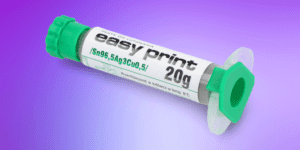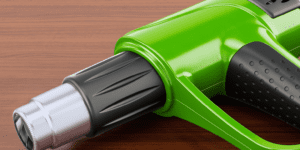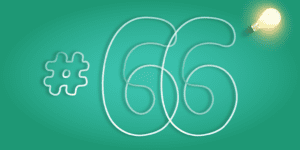Spis treści:
If you’ve been looking for information on how to start 3D printing or how to choose your first printer, you’ve come to the right place. And if you were looking for more expert advice on technical matters, well, Botland has it, too.
Botland Blog 3D Printing section is a treasury of knowledge for those who want to finally start printing. From the articles you will learn everything you need to know to get started and you will surprise your friends at the bar table, who “heard something about these printers”, that it is generally cool, but they do not know what this all 3D printing fuss is about. Finally, we decided that this is the exact moment – time has come to buy our first home 3D printer. And since the first purchase, the first rocky road appears. We don’t hold with stereotypes, but it’s a bit like a man walking into a drugstore for the first time and asking for some very specialized facial cosmetics for… umm, something. What to ask first when looking for a 3D printer?
1. What do I want to do with my 3D printer?
Or: why do I need such equipment? Of course, we don’t have to have precise requirements at the very beginning. Online communities, GitHub resources and the ever-increasing popularity of 3D printers (according to Exploding Topics, a website that collects trends on the web, in 2020 the 3D printing market was worth $13 billion and its value is expected to grow by 26% between 2022 and 2024) are sufficient assurance that we will certainly not run out of ideas on what to do with the 3D printer over time.
If the 3D printer is to be a team-shared equipment, and whether it will be used in the office or for the family team, then let’s ask ourselves why our team or department needs a 3D printer and what type of objects we want to print. This will make further decisions easier – for example those on issues of device power. Will our prints be framework models with minimal revisions and low levels of pre or post processing? Or are they going to be complex objects based on professional 3D printer filaments?
2. How big do I expect my printouts to be?
Bigger does not always mean better. The answer to the question of working area – because that’s what we call the surface of the table from which our print will gradually emerge – will help determine the budget. This is the stage at which we should compare different design plates on the printer. Architects and engineers of all kinds appreciate sizable workspaces above 300 x 300 x 300 mm. If we are going to print something small, it is worth saving the cost with Creality Ender 3. Many have just started with this cost-friendly option with a field of 200 x 200 x 200 mm including simple assembly – consisting of connecting two rather big pieces. It’s even incomparably easier than assembling an umbrella stand from a certain Swedish company.
Where does it work? Just take a look at the technical parameter referred to as working area or working area dimensions. Usually the first value given in hundreds of millimeters (more rarely in centimeters or in case of really big machines in meters) is the X axis, the second is the Y axis and the third is the Z axis (height/depth). Describing a 3D printer without work area dimensions is like a car for sale without engine capacity information.
3. What will I print from?
Different steel is found in kitchen knives, and different steel strengthens fibers for reinforcing concrete. Inks for traditional 2D printers offer varying print quality. 3D printing filaments are no different. There is an incredible plethora of them, and they go hand in hand with more and more additions within 3D printing technology. Sound complicated? Because it’s a veritable ocean of possibilities. But we decide how far we’re going to sail, and simple amateur and hobbyist applications can be the depth of a home aquarium. There is simply a wide range of sophistication here.
Most 3D printers print using a process called FDM (Fused Deposition Modelling). You may also come across the term FFF (Fused Filament Fabrication) – it’s the same thing and the difference is due to patent issues which need not be discussed here. Some people get scared when they see the phrase “FDM technology” and are convinced that this is some kind of terribly complicated machinery. It’s not rocket science, we assure you – just insert a spool of filament, set everything up and your three-dimensional object will be created. Each printout has a specific color, and the color of the printout is the color of the material used. There are printers with multiple heads or special feeders that will print different colors on different areas of the printed object. An example of those nifty machines are filament blending system and other filament breeding and postprocessing accessories.
Before you get into the ins and outs of filament material science and become an expert, it is worth remembering one thing: the most common material for 3D printing is good old PLA filament. It is cheap, easy to process, and a whole series of 3D printers are compatible with it. What is more, it is made from a renewable and biodegradable material, which is easy to produce by fermenting starch from corn, wheat or sugarcane (bioplastic).
4. Will I be able to handle all of this, or will I need support?
There’s abundance of 3D printers on the market, but when choosing the first one you especially have to consider whether you will pick it from a company/distributor/producer/other party that offers support. Promised ease of assembly and operation may not be so at all, or it is just a subjective thing. It is sad when someone leaves us alone with a deafening silence in a place where technical support for 3D printing should be. It can mean spare parts, additional accessories, answers to questions that may arise during operation, access to software and updates. Many companies just starting out, such as the growing number of startups, can offer us long-term issues at best. Long-term insofar as you will have to wait not only for parts, but even for answers on technical issues. Choosing a 3D printer from a reputable company will provide support at every stage of planning, equipping and working.

It’s no surprise that you that Botland store loves 3D printing. We are also the official distributor of the leading Creality 3D brand selling in Poland and across Europe. The anatomy of 3D printers is no mystery to us and we offer maintenance and tech service, so you already know who to call if you are an owner (or you plan to become one) of 3D printer of brand:
- Anet
- Anycubic
- Artillery
- Biqu
- Creality
- Dobot
- Flashforge
- Goofoo
- Kywoo3D
- MakerPi
- Prusa
- Snapmaker
- Urbicum
- Velleman
- Zortrax
5. Is it safe?
This question should actually come first, but we know from experience that you always look at the tail end.
Yes, we watched the movie Dark Waters, too. 3D printing is a chemistry, undeniable. So is the cartridge for your traditional desk printer, the acrylic paint to plaster your room walls, or the coolant in your refrigerator. Chemistry is everywhere. Filaments, like all materials, have certain physical and chemical properties such as softening point, shrinkage resistance, flammability or density.
Home 3D printers don’t take up much space and plug into the world’s most ordinary electrical outlet in the wall, but they must stand on a stable surface and ideally the room should be well ventilated, especially if you plan to print with ABS. You can already print a fork or spoon, as the popularity and number of food-safe filaments is growing, but don’t use plastics containing bisphenol A (BPA), which is found in polycarbonates and resins related to other methods of craft. Some 3D printers have nooks and crannies where bacteria can easily grow, so keep the device clean and make sure the fumes are drained properly. Also, watch out for a heated print head.
The good news is that exposure to fumes can be avoided with air circulation. Rest assured – no worries, the 3D printer is not to be approached in a chemical suit or mask.


But don’t confine yourself to our advice – browse through 3D printing categories at the top of the page for yourself and see what else is out there. You’ll find something for yourself eventually.
How useful was this post?
Click on a star to rate it!
Average rating 0 / 5. Vote count: 0
No votes so far! Be the first to rate this post.





